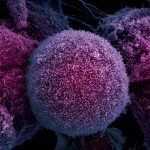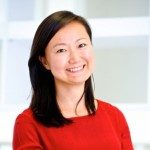Link to Pubmed [PMID] – 19668188
Nature 2009 Aug;460(7259):1136-9
The mechanisms involved in the reprogramming of differentiated cells into induced pluripotent stem (iPS) cells by the three transcription factors Oct4 (also known as Pou5f1), Klf4 and Sox2 remain poorly understood. The Ink4/Arf locus comprises the Cdkn2a-Cdkn2b genes encoding three potent tumour suppressors, namely p16(Ink4a), p19(Arf) and p15(Ink4b), which are basally expressed in differentiated cells and upregulated by aberrant mitogenic signals. Here we show that the locus is completely silenced in iPS cells, as well as in embryonic stem (ES) cells, acquiring the epigenetic marks of a bivalent chromatin domain, and retaining the ability to be reactivated after differentiation. Cell culture conditions during reprogramming enhance the expression of the Ink4/Arf locus, further highlighting the importance of silencing the locus to allow proliferation and reprogramming. Indeed, the three factors together repress the Ink4/Arf locus soon after their expression and concomitant with the appearance of the first molecular markers of ‘stemness’. This downregulation also occurs in cells carrying the oncoprotein large-T, which functionally inactivates the pathways regulated by the Ink4/Arf locus, thus indicating that the silencing of the locus is intrinsic to reprogramming and not the result of a selective process. Genetic inhibition of the Ink4/Arf locus has a profound positive effect on the efficiency of iPS cell generation, increasing both the kinetics of reprogramming and the number of emerging iPS cell colonies. In murine cells, Arf, rather than Ink4a, is the main barrier to reprogramming by activation of p53 (encoded by Trp53) and p21 (encoded by Cdkn1a); whereas, in human fibroblasts, INK4a is more important than ARF. Furthermore, organismal ageing upregulates the Ink4/Arf locus and, accordingly, reprogramming is less efficient in cells from old organisms, but this defect can be rescued by inhibiting the locus with a short hairpin RNA. All together, we conclude that the silencing of Ink4/Arf locus is rate-limiting for reprogramming, and its transient inhibition may significantly improve the generation of iPS cells.

